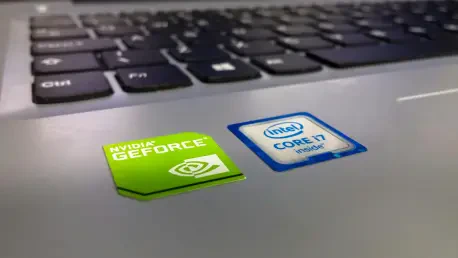In a startling revelation that has sent ripples through the machine learning community, a critical vulnerability in NVIDIA’s Merlin Transformers4Rec library has come to light, posing severe risks to ML systems worldwide. Identified as CVE-2025-23298, this flaw enables unauthenticated attackers to execute remote code with root privileges, potentially compromising entire organizational infrastructures. Discovered by security researchers, the issue stems from unsafe deserialization practices within the library’s model checkpoint loader, highlighting a dangerous gap in security protocols. As machine learning continues to underpin critical applications—from autonomous vehicles to financial forecasting—the implications of such a vulnerability are profound. This discovery underscores the urgent need for robust security measures in AI frameworks, as attackers could exploit this flaw by embedding malicious code in seemingly harmless checkpoint files. The stakes are high, and the tech industry must now grapple with how to protect systems that are increasingly integral to modern innovation.
Understanding the Vulnerability’s Core Mechanism
The root of this critical issue lies in the load_model_trainer_states_from_checkpoint function of NVIDIA Merlin Transformers4Rec, specifically its reliance on PyTorch’s torch.load() without adequate safety parameters. This function utilizes Python’s pickle module, a tool notorious for allowing arbitrary object deserialization, which can be manipulated by attackers to execute harmful code. By crafting a malicious checkpoint file with a custom __reduce__ method, an attacker can trigger the execution of arbitrary system commands, such as downloading and running remote scripts through mechanisms like os.system(). Rated at a CVSS 3.1 score of 9.8, indicating critical severity, this vulnerability affects versions up to v1.5.0. The ease of exploitation—requiring only that a tainted checkpoint be loaded—amplifies the danger, especially since ML practitioners frequently handle such files in collaborative or production environments. This flaw exposes a fundamental weakness in how deserialization is managed, putting countless systems at risk of unauthorized access.
Beyond the technical intricacies, the attack surface for this vulnerability is alarmingly broad due to common practices within the ML community. Pre-trained model checkpoints are often shared via public repositories or cloud storage, making them accessible to potential adversaries who can inject malicious content. Additionally, many production ML pipelines operate with elevated privileges, meaning a successful exploit could escalate to root-level access, compromising not just the host system but potentially an entire network. The reliance on pickle for serialization, despite its known risks, reflects a broader oversight in prioritizing functionality over security. This situation serves as a stark reminder that even advanced technologies like machine learning are not immune to fundamental security flaws. As systems become more interconnected, the potential for cascading failures grows, emphasizing the need for immediate action to address such vulnerabilities before they are exploited on a larger scale.
NVIDIA’s Response and Mitigation Strategies
In response to this alarming flaw, NVIDIA has acted swiftly by releasing a patch in PR #802, which replaces the vulnerable pickle calls with a custom load() function detailed in serialization.py. This updated loader introduces input validation and whitelists approved classes to block unauthorized deserialization attempts, significantly reducing the risk of remote code execution. Developers are also advised to adopt the weights_only=True parameter in torch.load() to ensure that only model weights are processed, avoiding the loading of untrusted objects. While this patch addresses the immediate threat for users who update to the latest version, it also highlights the importance of proactive security measures in software development. NVIDIA’s quick response demonstrates a commitment to safeguarding ML systems, but the incident raises questions about how such flaws slipped through initial testing, urging a deeper examination of security protocols in AI libraries.
Alongside NVIDIA’s efforts, the broader tech community has advocated for abandoning pickle-based mechanisms entirely due to their persistent security shortcomings. Safer alternatives, such as Safetensors or ONNX, are gaining traction for model persistence, offering more secure ways to store and share data. Additional recommendations include cryptographic signing of model files to verify authenticity, sandboxing deserialization processes to limit potential damage, and integrating ML pipelines into routine security audits. These practices aim to create a zero-trust environment where no input is assumed safe until validated. The consensus is clear: security must be a foundational element of ML framework design, not an afterthought. As threats evolve, adopting these strategies will be crucial for developers and organizations to protect their systems from supply-chain attacks and other sophisticated exploits that target the unique workflows of machine learning environments.
Charting a Safer Path for ML Security
Reflecting on the incident, it became evident that the reliance on outdated and insecure serialization methods like pickle had left ML systems dangerously exposed to remote code execution threats. The critical nature of the flaw in NVIDIA Merlin Transformers4Rec, with its potential for root-level access, had underscored a systemic issue within AI development practices. NVIDIA’s deployment of a patch had been a vital step in mitigating immediate risks, providing a lifeline to affected users who updated promptly. Moreover, the push for safer alternatives and stricter validation processes had begun to reshape how the industry approached model sharing and deserialization.
Looking ahead, the path to enhanced security involves adopting a proactive stance through comprehensive audits and the integration of advanced protective measures. Developers should prioritize tools like Safetensors and implement cryptographic safeguards to ensure the integrity of shared resources. Organizations must also invest in training to recognize and address potential vulnerabilities early. By fostering a culture of security-first design, the ML community can build resilient systems capable of withstanding emerging threats, ensuring that innovation continues without compromising safety.









